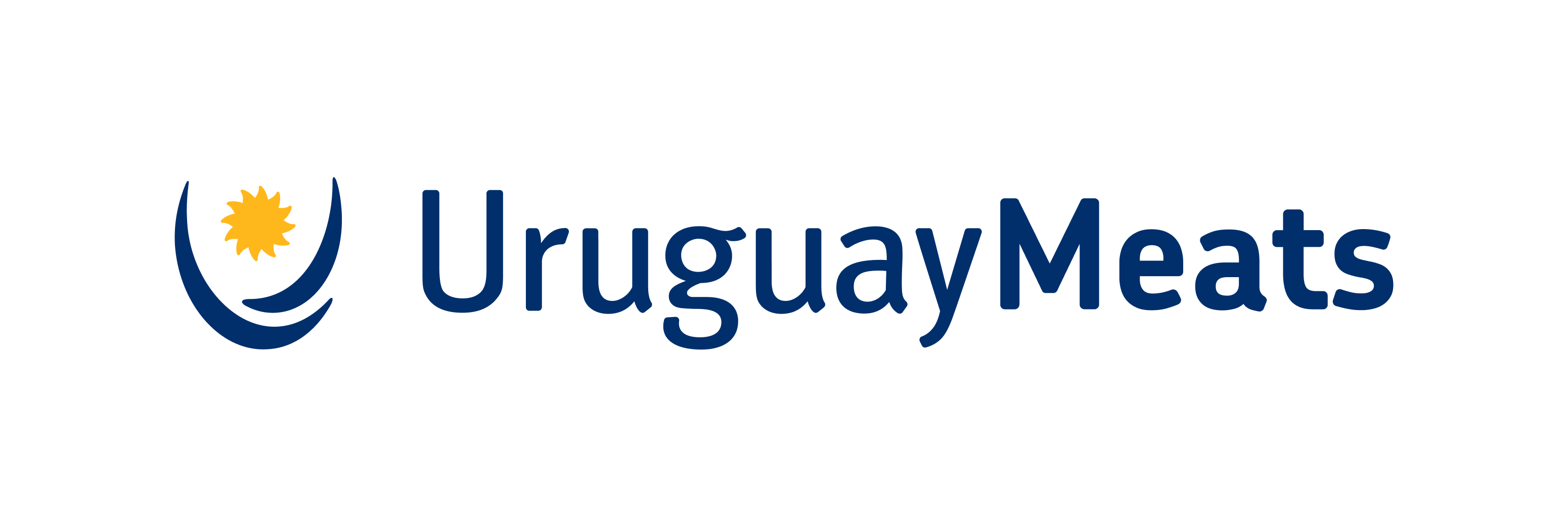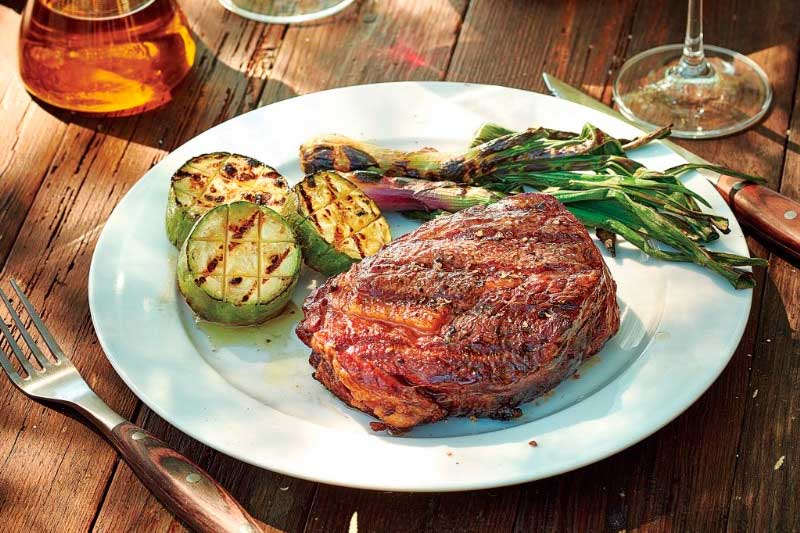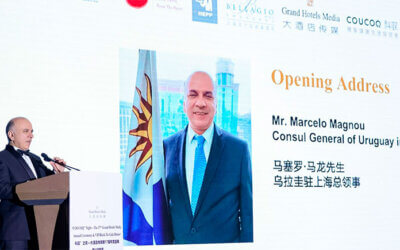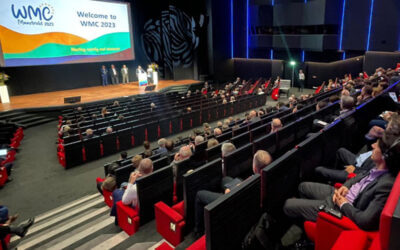INAC established May 29 as Meat Day a few decades ago, as a special date to celebrate the importance of meat in the country’s development and in people’s diets.
Cuisine synthesizes the history of Uruguayans, their customs and the multiple cultures that make up Uruguayan essence, a tradition boldly enrooted in our best products. Uruguayan meats are the center of all, standing out above any other dish. Behind this differential proposal, which positions the country among the world’s largest exporters and best producers, there are some issues worth knowing that should be considered when you eat Uruguayan meats:
Our land:
To begin with, Uruguay is ideal for raising cattle. There is a direct relationship between the quality of the meats we eat and the pastures that feed our cattle. Uruguay is located in the South American pampas, in one of the largest temperate grassland regions in the world and on one of the most important freshwater reserves on the planet, where the South American pampas meet the Atlantic Ocean. This corner of the world is characterized by its biodiversity: over 9.5 million hectares of natural countryside, crossed by an extensive net of rivers and streams, populated by a myriad of tree and grass species, a growing valuable native forest, and a diverse fauna. Uruguayan herds grow in open ranges all year round, and each animal has an area equivalent to 2 soccer fields.
Innovation and Awareness: (Animal Welfare and Sustainability)
Uruguay has a long tradition and culture, having produced and exported beef for more than 400 years.
Today there are more than 44,000 farms operating in the country; most of them are families that raise cattle, firmly convinced of the importance of sustainable management of natural resources and the most up-to-date practices of animal welfare. This conviction is shared by all the stakeholders in the chain, ensuring the animals’ optimal conditions from their birth on the farms to their slaughter. We also emphasize that our country banned the use of hormones and antibiotic growth promoters in animals, and their health is in the hands of skilled professionals, which is vital for epidemiological control.
There is also an important line of actions geared to preserve our natural resources, measurements and studies on the impact of cattle breeding and the management of waste from meat processing plants.
Biodiversity. Livestock farming in Uruguay has a unique characteristic – it is implemented on the basis of a renewable natural resource: natural ranges; every year the country naturally produces the grass required to feed our herds, who turn that grass into a product of very high nutritional value and density. This is the key pillar: we produce in an ecosystem that is naturally designed for ruminants (the pampas biome); our ecosystem is the safeguard of a very high biodiversity, and livestock farming contributes to its conservation (without cattle breeding, ecosystems get degraded). In Uruguay, native forests have been protected since 1987; it is the only country in South America where native forests are on the rise. In addition, Uruguay recently signed the Montreal Agreement (2022) for the preservation and recuperation of natural resources.
Measurement. “In order to establish a comprehensive approach to livestock production systems in Uruguay, the Ministries of Environment and of Livestock, Agriculture and Fisheries created the Interinstitutional Technical Team for the Livestock Environmental Footprint. This team seeks to disseminate and make the environmental performance of Uruguay’s livestock production visible at home and abroad, and to prepare the country to respond to the current and future demands of increasingly demanding markets. It also seeks to set a factual basis for defining policies for farming, aligning production and environmental policies” (source: Livestock Environmental Footprint web site). The environmental footprint of livestock farming tracks the effect of the activity on our natural resources and emissions, measuring the effect of livestock farming on biodiversity, soil, water and greenhouse gases.
Emissions. In summary, livestock emissions are mostly biogenic (explained in this link), and added to the fact that our country has a relatively constant stock of animals, its contribution to global warming tends to be neutral.
Furthermore, our country is internationally committed to become more efficient, increasing food production (for the sake of global food security) while reducing the pressure of our emissions per kg of meat. We have also committed to reducing our methane emissions by 32% per kg of meat by 2025. Based on current calculations, we are already improving, and there is even the potential for Uruguayan livestock to be part of the solution to climate change, rather than worsening it.
Waste management. Our abattoirs are equipped with state-of-the-art technology, and most of our exporters are qualified to suit the most demanding markets including, but not limited to China, Japan, South Korea, the United States, and the European Union.
Moreover, Uruguay is working for an adequate management of the waste generated by the meat-packing industry, which is necessary not only for the environment, but also from an economic standpoint. Most of this waste is organic, and composting is frequently used to this end.
The recovery of waste and by-products, with a view to the circularity of materials and resources, is an inherent aspect of the meat processing industry and is key to its environmental and economic sustainability.
Contribution of our meats:
The origin and quality of what we eat is of paramount importance: it id clear that we should favor the consumption of natural and nutritious foods. To remain healthy, we absolutely need to be actively engaged with what we eat.
A balanced diet means much more than the ensuring a healthy body; meat facilitates multiple processes at the different stages of life. It is especially beneficial, given the broad range of necessary nutrients it provides, proteins, iron, vitamin B12, zinc and omega 3 (in red meats from grass-fed animals) are key components.
Below are some of the most outstanding facts that account for the above:
Proteins
– They are essential for the growth, formation, and repair of tissues, as well as for the immune system that defends us against disease.
– Proteins are essential for the physical and mental growth and development of people.
Iron
– Iron is considered an essential mineral because it is necessary to produce hemoglobin, a key component of red blood cells, which transport oxygen in our bloodstream.
– Because of this essential role in oxygen transport, iron plays a very significant role in health, particularly in sports (red blood cells improve performance, endurance and speed).
Vitamin B12
– This vitamin is only found in foods of animal origin.
– Its adequate intake reduces fatigue and tiredness, while its chronic deficiency is associated with potential hematological (pernicious anemia), gastrointestinal and neurological changes.
Safe consumption:
Good eating implies knowing how to choose. Today’s dynamics link us with our food as consumers; more and more, we must know what to buy. Always buy safe meat products at INAC-authorized facilities, and be mindful of hygiene, storage and handling standards.
In short, when facing a dish with Uruguayan meat, so loaded with flavors and nutrients, remember its long journey, including the geography and natural resources involved, its history and the people in the industry that have implemented good practices and good management at all stages of the chain.
Flavors are not the same when we know what is behind them. So tasting Uruguayan meats will be a unique moment, especially if you understand that there is a country behind this experience.




